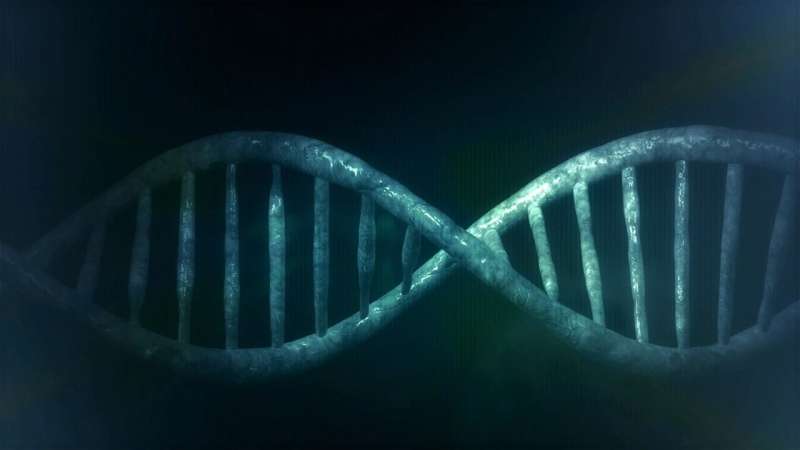This article has been reviewed according to Science X's editorial process and policies. Editors have highlighted the following attributes while ensuring the content's credibility:
fact-checked
trusted source
proofread
Genetic condition hemochromatosis linked to higher levels of disease in older people

A large-scale study has found that some people whose genetics are linked to the common iron overload condition hemochromatosis have substantially greater levels of liver, musculoskeletal and brain disease than previously reported, especially at older ages.
Hemochromatosis causes a build-up of iron in the body which can cause harm to joints and organs—although the extent of this harm is unclear, especially in older ages. The new research, led by a team at the University of Exeter found higher levels of disease plus greater mortality in males, especially after age 65.
The research analyzed data from more than 450,000 European Ancestry participants in UK Biobank, over a 13-year follow-up, making it the largest-scale study to look at disease outcomes linked to hemochromatosis. The paper is entitled "HFE genotypes, haemochromatosis diagnosis and clinical outcomes to age 80: a prospective cohort study in UK Biobank," and is published in BMJ Open.
For the first time, the team provided data on clinical outcomes up to the age of 80 years on people who carry genes linked to hemochromatosis, providing insight into how the condition affects older age groups, including those who were undiagnosed at baseline.
Dr. Janice Atkins, Senior Research Fellow at the University of Exeter and study co-author, said, "Hemochromatosis is the most common genetic disorder in people of Northern European ancestry, yet we are still learning the extent to which it causes harm. Our study is the most comprehensive to date and reveals higher levels of death and organ and joint damage than previously known, including liver disease and joint replacements."
In UK Biobank, 2,902 people (0.6% of participants) had two copies of the genetic variant (C282Y) which mean they are at risk of the condition. Of these people, who had a mean age of 57, only a small proportion were diagnosed with hemochromatosis at the start of the study- 12% of males and 3.4% of females.
By the time males with the two genetic variants had reached the age of 80, the study found that 33.1% had died, compared to 25.4% without the variants. The study also found that 27.9% vs. 17.1% had joint replacements, 20.3% vs. 8.3% had liver disease, and there was higher delirium, non-Alzheimer's dementia, and Parkinson's disease in those with the two gene variants.
In females by age 80, those with both genetic variants had higher levels of liver disease (8.9% vs. 6.8%), joint replacements and delirium.
Hemochromatosis is more common in males, and particularly affects white people of Northern European ancestry. An estimated 175,000 men of European ancestry in the UK have the two gene variations that cause hemochromatosis. The disorder is known as the "Celtic curse" because it is particularly prevalent in Celtic bloodlines.
Reliable tests are available to identify those at risk—blood tests for measuring iron levels and genetic testing. Symptoms can include feeling tired all the time, muscle weakness and joint pains, meaning it is often misdiagnosed as the usual signs of aging. Once diagnosed, the condition is easily treated by a process similar to donating blood several times a year, to lower iron levels. The blood can be donated to the NHS transfusion service once iron levels have reduced enough.
Professor David Melzer, who leads the research team, said, "These findings highlight the need for earlier diagnosis of iron overload, as many people with the high risk genetic variants are currently diagnosed too late to prevent organ damage. The condition can be picked up with a simple blood iron test, and it is encouraging that more and more GPs are aware of the need to test for iron overload."
"The research results also contained very good news for people with the milder genetic variants (called C282Y/H63D and H63D homozygotes), with no excess of fatigue, liver fibrosis, diabetes or arthritis, adding to the evidence that these variants are benign. Of course, some people with these variants will unfortunately have fatigue, liver fibrosis, arthritis or diabetes, but this happens at the same rate as people without these gene variants and underlines the need to investigate the other causes of these conditions too."
Study co-author Dr. Jeremy Shearman, Consultant Hepatologist and Gastroenterologist at South Warwickshire University NHS Foundation Trust, said, "This important data supports the long-held belief that we should be using targeted genetic testing more consistently to make an earlier and more accurate diagnosis of hemochromatosis. It is a common condition here in the UK and can be easily treated to avoid serious harm."
The team has launched a patient-friendly website designed to help people with hemochromatosis-gene variants understand and interpret their risk of disease.
More information: Mitchell R Lucas et al, HFE genotypes, haemochromatosis diagnosis and clinical outcomes at age 80 years: a prospective cohort study in the UK Biobank, BMJ Open (2024). DOI: 10.1136/bmjopen-2023-081926





















